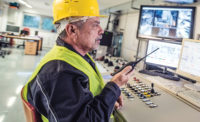Five reasons hazards are downplayed or not reported

The construction industry is dangerous. The Bureau of Labor Statistics states construction constitutes only four to five percent of all work in the United States each year. But more than 20 percent of all workplace fatalities occur in the construction environment. That’s one out of every five worker deaths.
To prevent workplace injuries, including fatalities, companies establish comprehensive health and safety plans and rigorous management systems. These plans include everything from training regimens to work procedures to safety rules and more. The intent is that if these guidelines are followed, injuries won’t happen.
Therein lies the problem – IF they are followed. Just because a plan is in effect doesn’t mean it will be followed. The work process in the field may differ from the safety plan. It is through observation that an organization can determine the gap between the plan (what is desired) and the process (what actually occurs).
Observations are performed to identify gaps in the plan so the causal factors can be identified and mitigated or corrected before they lead to an injury. Honesty in reporting any deviation from the plan, such as an unsafe hazard, is imperative. But as humans, especially when judged by outcomes (or perceived to be judged), we tend to downplay risks and assure those around us that everything is under control.
This lack of transparency is extremely prolific. On average, approximately one out of every two assessments or worksite safety inspections conducted results in no unsafe or at-risk findings. This phenomenon is so prolific – we’re talking about the underreporting of hazards – that it is been aptly named “Appearance-Based Safety.” In effect, some us perceive that it is better to look good than to be good.
Eliminate reporting stigma
You can’t manage risk if you don’t know where your risk resides. Unfortunately there is often a stigma in reporting hazards, despite the desire to prevent injuries.
• Company culture – If the hazards submitted don’t get acted upon, then observers quit reporting as they realize they have no voice in resolving these issues. If the organization “shoots the messenger,” the negative outcome for the observer leads to failure to reporting. If safety is mere lip service and production trumps safety, then hazard reporting tends to not happen.
• Psychosocial aspects – If management pressures observers not to report hazards – “Don’t make me look bad!” – underreporting will occur. If observers don’t want to get their friends or co-workers in trouble, then hazards will not be reported. Simply trying to avoid potential confrontation or an uncomfortable conversation can lead to underreporting. Fear can remove any desire to report findings.
• Perception of others – If an organization is preoccupied with the perception from outside parties such as owners or insurers or regulatory agencies, then the objective is to keep findings “under the radar,” which is another way of saying they will not be reported. In addition, some people personalize hazard reporting and link hazard findings with a lack of competence or capability, as if they would be viewed as not properly doing their job if hazards are found.
• Incentives – If a workplace incentive, such as a bonus or award, is tied to a metric such as percent safe, the reporting of hazards runs counter to the incentive. It’s in the best interest of those getting incentivized to not report.
• Found & fixed – If a hazard is found and addressed immediately, many do not see the value in reporting since the issue is resolved. Several problems stem from this belief. First, the hazard seen and addressed could be a symptom of a larger problem. Fixing the symptom does not correct the causal factors. Failure to report could impede a broader analysis of a bigger issue. Second, without reporting, it is unknown if the incident is a singular occurrence or a series of the same or similar issues.
Observe and mitigate
Risk cannot be managed if the risk is unknown. But potential risk is just that, potential. Nothing adverse has happened yet. Perhaps hazards are not reported vigorously because work can occur countless times unsafely without resulting in injury.
In fact, the way in which safety is measured – usually through injury rates only – can lead to a false sense of security. If work is done unsafely and doesn’t result in an injury, the impression can be given that there is no problem. For example, a worker can stand on the top of a ladder every day for months without injury. Should he fall and get injured, it is assured that blame will be sought; yet absent the injury, the same thing occurred previously and repeatedly.
A paradigm shift is necessary in the safety industry so that pre-incident investigations can and should occur, which is just another way of saying proactively observe and mitigate before an injury occurs.
Those who don’t feel well seek a doctor’s advice. Honesty in the treatment and exchange is certainly expected. If a broken bone exists or an illness is present, it is expected to be brought before a doctor in a timely manner, along with a diagnosis and prescribed path to recovery. Imagine if the doctor found something amiss but reported that all is good. Their credibility and professionalism would certainly be in doubt. Why then is it accepted, and sometimes even encouraged, to do the same to the reporting of hazards in construction? The simple answer – it should not.
To err is human. Don’t be surprised to often find instances of downplaying or not reporting hazards in the workplace. To learn from our mistakes is also human. To prevent injury, a honest discourse is needed on the existence of hazards as well as proactive action to address the nature of those hazards in order to prevent injury
Looking for a reprint of this article?
From high-res PDFs to custom plaques, order your copy today!





